
Citizen Kane is a 1941 American drama film directed by, produced by, and starring Orson Welles. Welles and Herman J. Mankiewicz wrote the screenplay. The picture was Welles's first feature film.
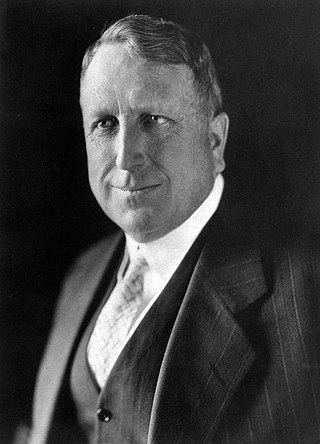
William Randolph Hearst Sr. was an American newspaper publisher and politician who developed the nation's largest newspaper chain and media company, Hearst Communications. His flamboyant methods of yellow journalism influenced the nation's popular media by emphasizing sensationalism and human-interest stories. Hearst entered the publishing business in 1887 with Mitchell Trubitt after being given control of The San Francisco Examiner by his wealthy father, Senator George Hearst.

Marion Davies was an American actress, producer, screenwriter, and philanthropist. Educated in a religious convent, Davies fled the school to pursue a career as a chorus girl. As a teenager, she appeared in several Broadway musicals and one film, Runaway Romany (1917). She soon became a featured performer in the Ziegfeld Follies.

Hearst Castle, known formally as La Cuesta Encantada, is a historic estate in San Simeon, located on the Central Coast of California. Conceived by William Randolph Hearst, the publishing tycoon, and his architect Julia Morgan, the castle was built between 1919 and 1947. Today, Hearst Castle is a museum open to the public as a California State Park and registered as a National Historic Landmark and California Historical Landmark.

Charles Foster Kane is a fictional character who is the subject of Orson Welles' 1941 film Citizen Kane. Welles played Kane, with Buddy Swan playing Kane as a child. Welles also produced, co-wrote and directed the film, winning an Oscar for writing the film.
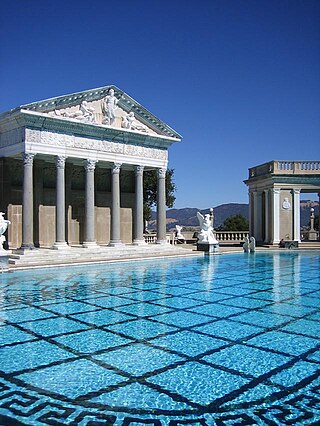
The Neptune Pool is an outdoor swimming pool ensemble at Hearst Castle, in San Simeon, California. As well as a large swimming pool, the terrace also includes fountains, ornamental pools, sculptures, marble pavilions, alabaster lanterns, dressing rooms, and a mainly reconstructed ancient temple facade.

RKO 281 is a 1999 American historical drama television film directed by Benjamin Ross, written by John Logan, and starring Liev Schreiber, James Cromwell, Melanie Griffith, John Malkovich, Roy Scheider, and Liam Cunningham. The film depicts the troubled production behind the 1941 film Citizen Kane. The film's title is a reference to the original production number of Citizen Kane. It premiered on HBO on November 20, 1999.

Oheka Castle, also known as the Otto Kahn Estate, is a hotel located on the North Shore of Long Island, in West Hills, New York, a hamlet in the town of Huntington. It was the country home of investment financier and philanthropist Otto Hermann Kahn and his family.

Bill Gates designed and owns a mansion that overlooks Lake Washington in Medina, Washington. The 66,000-square-foot (6,100 m2) mansion incorporates technology in its design.

The Battle Over Citizen Kane is a 1996 American documentary film directed and produced by Thomas Lennon and Michael Epstein, from a screenplay by Lennon and Richard Ben Cramer, who also narrates. It chronicles the clash between Orson Welles and William Randolph Hearst over the production and release of Welles's 1941 film Citizen Kane, which has been considered the greatest film ever made.
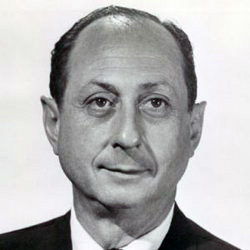
William Alland was an American actor, film producer and writer, mainly of Western and science-fiction/monster films, including This Island Earth, It Came From Outer Space, Tarantula!, The Deadly Mantis, The Mole People, The Colossus of New York, The Space Children, and the three Creature from the Black Lagoon films. He worked frequently with director Jack Arnold. Alland is also remembered for his acting role as reporter Thompson, who investigates the meaning of "Rosebud" in Orson Welles's Citizen Kane (1941).
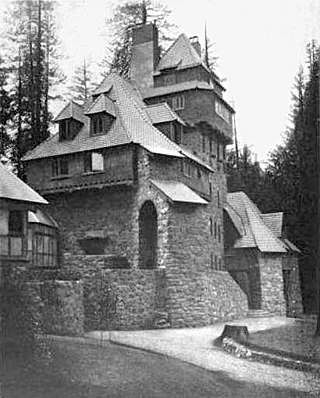
Wyntoon is a private estate in rural Siskiyou County, California, owned by the Hearst Corporation. Architects Willis Polk, Bernard Maybeck and Julia Morgan all designed structures for Wyntoon, beginning in 1899.

Sherwood Dam, known also as Lake Sherwood Dam, Alturas Dam, and Potrero Dam, is a 270-foot-long (82 m) concrete arch dam in the Santa Monica Mountains near Thousand Oaks, California. Completed in 1904, its construction led to the creation of the 165-acre (67 ha) Potrero Lake over the following winter. It was the first reservoir of its size in the area, and remains one of the oldest standing dams in California.
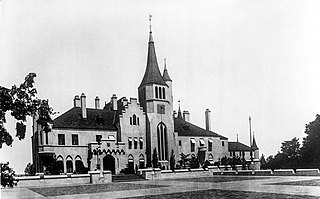
Beacon Towers was a Gilded Age mansion on Sands Point in the village of Sands Point on the North Shore of Long Island, New York. It was built from 1917 to 1918 for Alva Belmont, the ex-wife of William Kissam Vanderbilt and the widow, since 1908, of Oliver Belmont.

The sources for Citizen Kane, the 1941 American motion picture that marked the feature film debut of Orson Welles, have been the subject of speculation and controversy since the project's inception. With a story spanning 60 years, the quasi-biographical film examines the life and legacy of Charles Foster Kane, played by Welles, a fictional character based in part upon the American newspaper magnate William Randolph Hearst and Chicago tycoons Samuel Insull and Harold McCormick. A rich incorporation of the experiences and knowledge of its authors, the film earned an Academy Award for Best Writing for Herman J. Mankiewicz and Welles.

The authorship of the screenplay for Citizen Kane, the 1941 American motion picture that marked the feature film debut of Orson Welles, has been one of the film's long-standing controversies. With a story spanning 60 years, the quasi-biographical film examines the life and legacy of Charles Foster Kane, played by Welles, a fictional character based in part upon the American newspaper magnate William Randolph Hearst and Chicago tycoons Samuel Insull and Harold McCormick. A rich incorporation of the experiences and knowledge of its authors, the film earned an Academy Award for Best Original Screenplay for Herman J. Mankiewicz and Welles.

The Beverly Estate is a property built in 1926 at 1011 North Beverly Drive in Beverly Hills, California.
















